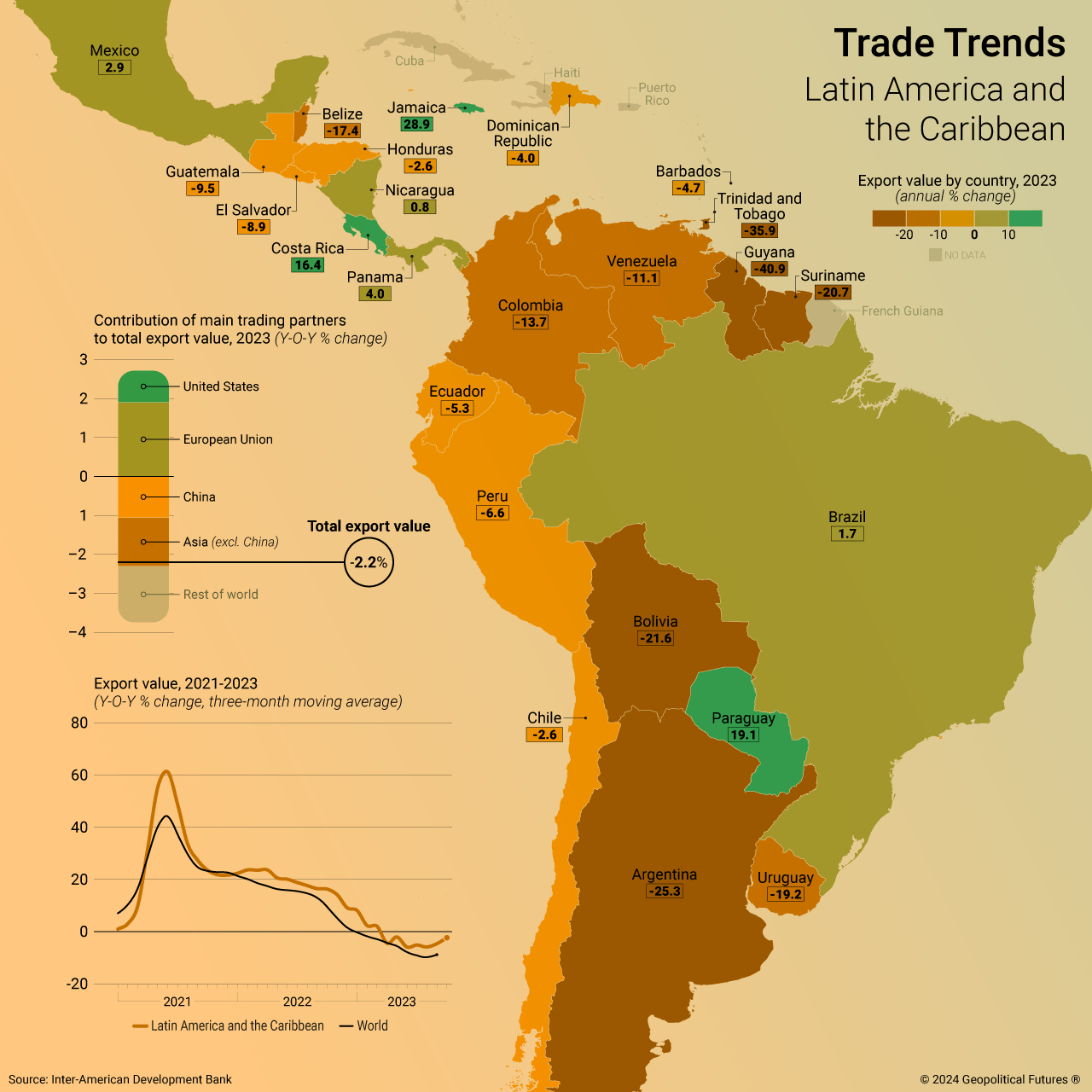For many Latin American countries, exports are a crucial element in economic growth, with contributions equating to or exceeding 30 percent of gross domestic product in Bolivia, Chile, El Salvador, Jamaica, Paraguay, Peru, Ecuador and Uruguay, based on the latest data from the World Bank. This figure surpasses 40 percent for Costa Rica, Guyana, Honduras, Mexico, Panama and Suriname. Most of the region’s exports are commodities rather than high value-added finished goods.
The World Bank figures show a contraction of 2.2 percent in the value of exports from Latin America and the Caribbean last year, despite a modest volume increase of 1.8 percent, primarily driven by exports from Mexico and Brazil. The drop in export value stems from falling prices (down 16.7 percent for oil, 8.6 percent for soybeans, 3.6 percent for copper and 0.9 percent for iron ore) and reduced demand from key importing partners. Although the downturn in importer demand has begun to slow or even stabilize, projections by the Inter-American Development Bank suggest that an expansion in export values may not commence until May or later.





